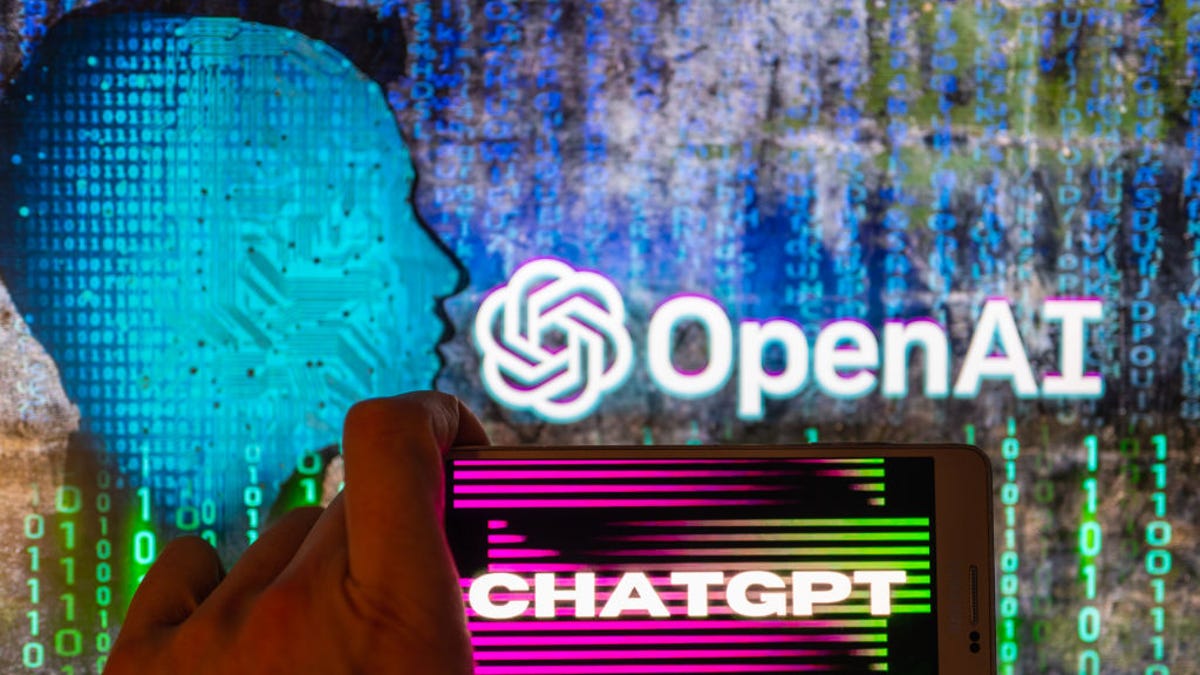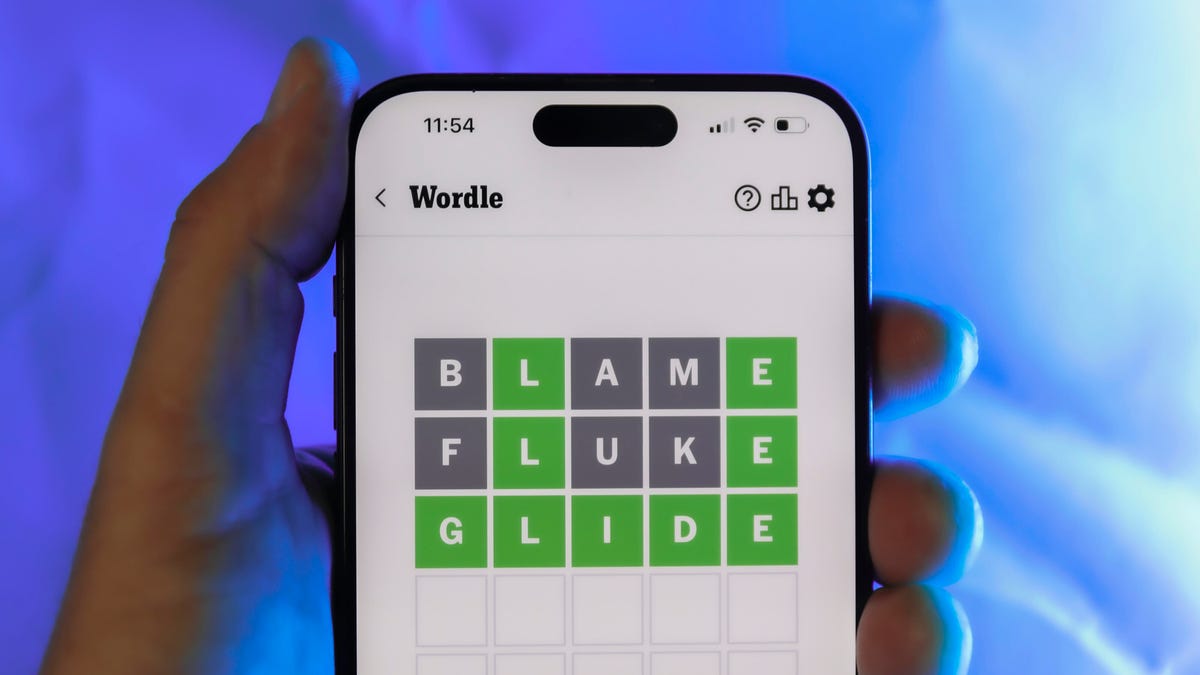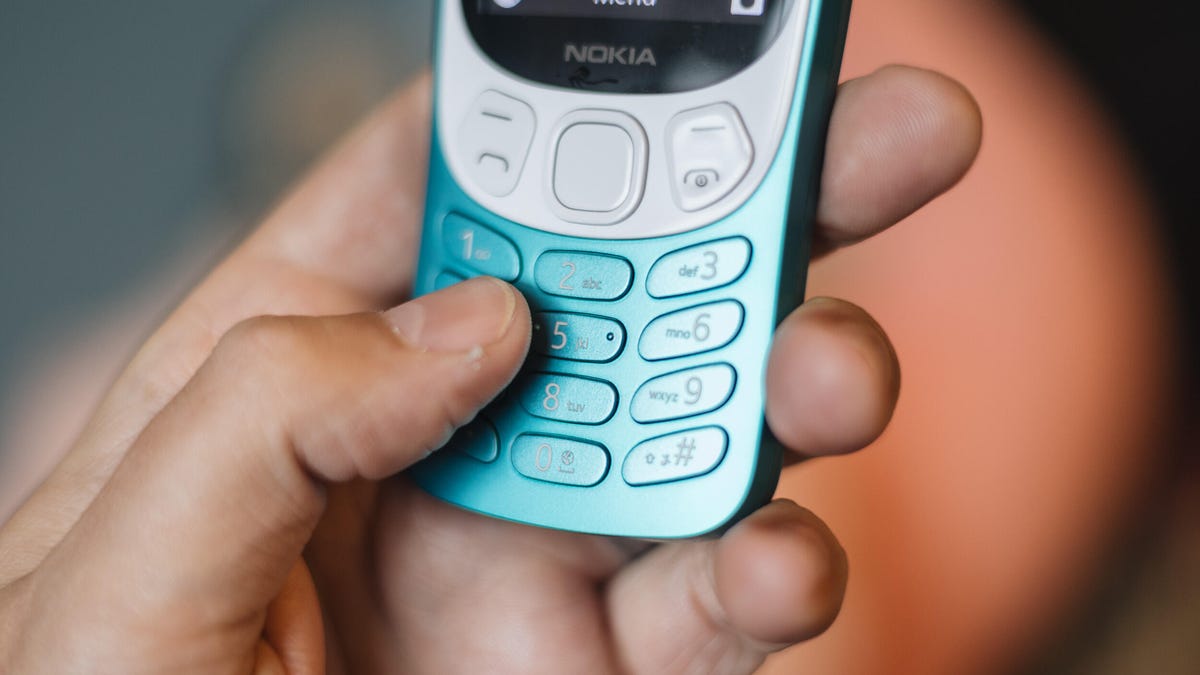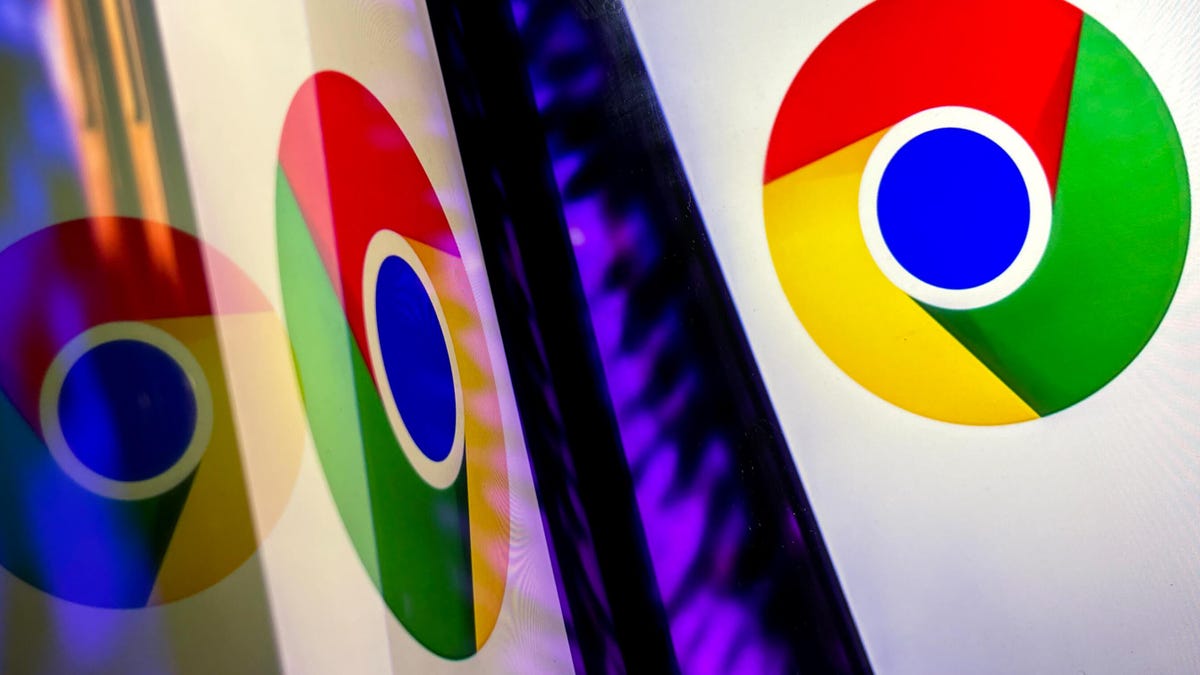Technologies
Remember Bing? With ChatGPT’s Help, Microsoft Is Coming for Google Search
The future of search is conversational, if ChatGPT’s viral success is anything to go by.

Have you ever found yourself trawling through endless pages of results on a search engine to find the answer to a complex question? Say you want to find out if a vegetarian diet is suitable for your dog. Your research journey might begin by hopping onto Google and typing «is a veg diet good for dogs» into the search box and then having to make sense of the legion of generated links. By the time you find an answer, you’ve sunk way more time than you’d budgeted into poring through articles, reports and their sources.
In the not-so-distant future, finding the answer to a complex question might not be such a tedious process. Microsoft is reportedly integrating a more advanced version (GPT-4) of the AI tech that underlies the headline-grabbing ChatGPT into its Bing search engine in a move that could transform search as we know it. More specifically, Bing might have the potential to serve up a search experience that’s superior to Google, according to AI researchers, and potentially usurp the search giant’s decades-long dominance.
«ChatGPT is the first new technology in more than a decade that may really transform search and that could, at least in principle, upend Google’s market dominance,» said Anton Korinek, an AI researcher and professor of economics, at the University of Virginia. «What the technology does is that it allows consumers to interact with their computer in a much more natural and conversational form than traditional search.»
Read More: Why ChatGPT Will Be Everywhere in 2023
At this point, we don’t know what Bing’s AI-driven search results might look like exactly (although some people have seen the new version of Bing appear briefly before vanishing). Microsoft declined to comment for this story. However, AI researchers expect a meaningful departure from the status quo in terms of how a search engine presents an answer and how users interact with it. After all, ChatGPT is not designed to browse the internet for information (like a search engine). Instead, the chatbot uses information studied from vast swaths of training data to generate a response.
«ChatGPT can answer its users with a single clear response compared to the myriads of links of traditional search engines. It also has capabilities that are far beyond traditional search engines, like [the ability] to generate new text, explain concepts, have a back-and-forth conversation between the user and the system, and so on,» said Korinek. «People still find emergent capabilities that even the creators of ChatGPT were not aware that the system had.»
Microsoft announced plans in January to invest more resources into OpenAI, the creator of ChatGPT, to the tune of $10 billion. The deal would help keep both companies at the cutting edge of what’s known as generative AI, a tech used in ChatGPT that can learn from copious amounts of data to create virtually any content format (text, images, music and so on) simply from a text prompt.
Search is just one in a suite of consumer-facing products in Microsoft’s stable that could potentially change meaningfully for customers in the coming years. According to a report by The Information, the Seattle-based tech giant also has plans to integrate ChatGPT’s AI tech into long-established products like Word, PowerPoint and Outlook in an endeavor that could change how more than a billion people work and accomplish daily tasks. For instance, integrating it into Outlook could mean simply prompting the email application to write a message about a specific topic.
«Microsoft will deploy OpenAI’s models across our consumer and enterprise products and introduce new categories of digital experiences built on OpenAI’s technology,» the company said in a press release announcing the expanded partnership.
Conversational search
For its part, Google and its cutting-edge subunit DeepMind have been working on similar systems for years. In fact, Google pioneered the AI technology known as a transformer that’s used in ChatGPT, GPT-3 and GPT-2. The search giant chose not to release them to the public, though, in part over concerns about unethical behavior and how chat systems sometimes break social norms.
However, in the wake of ChatGPT’s viral success, Google says it’s gearing up to release its challenger to ChatGPT imminently.
«In the coming weeks and months, we’ll make these language models available, starting with LaMDA, so that people can engage directly with them,» CEO Sundar Pichai said on a call detailing Alphabet’s fourth-quarter financial results in early February.
Google will focus on responsible AI, Pichai said, an important point given the problems with bias and wrong answers the technology can produce, among others. For instance, in 2016 Microsoft created a chatbot called Tay that it was forced to take offline after it spewed out hate speech. Even ChatGPT, which has rules to create positive and friendly content, can be manipulated into producing upsetting responses using the right prompts.
Google has also recently invested $300 million dollars into ChatGPT rival Anthropic, according to a Financial Times report.
«A competing system that is currently conducting beta tests is Anthropic’s Claude, which (or perhaps I should say who) has a very different personality from ChatGPT and is really a pleasure to interact with —it is so refined, cultured and polite,» said Korinek.
It’s no secret that Google search has become more conversational in general over the years. The company has made progress in this area with the Google assistant and with knowledge panels in search, and for years has pitched conversation as the future of search, demoing its AI systems LaMDA and MUM at its 2021 I/O developer conference.
Leveraging OpenAI’s artificial intelligence seems to be how Microsoft is attempting to edge out Google at its own game. In the wake of ChatGPT’s release, Google management issued a «code red,» according to The New York Times. The report said internal teams had been reassigned to kickstart work on AI between now and an expected company conference in May.
Still, Google’s search engine today remains the undisputed market leader as it has for decades, commanding 84% of global search market share, compared to Bing’s 9% (although it has grown in recent years) in 2022, according to Statista.
Google declined to comment for this story.
Read More: Microsoft’s New Tools Use AI to Generate Any Image You Imagine
How smart is ChatGPT?
As you’ve probably heard by now, ChatGPT is a sophisticated chatbot that went viral globally after its consumer release in late November as a free online tool accessible to anyone with an internet connection. The AI-powered chatbot made headlines thanks in part to its ability to churn out delightful poetry, generate meal plans and provide authoritative answers to complex questions within seconds after being prompted. The tech underlying it isn’t exactly brand new, but no chatbot had yet managed to capture mainstream fascination in the way that ChatGPT did. That’s largely because OpenAI built a snazzy user experience around the GPT-3.5 language model, and that’s the phenomenon we know as ChatGPT.
GPT-3.5 is an improved version of GPT-3, which debuted in 2020 and which learned from vast tracts of data and code to help it achieve its abilities. According to researchers at Stanford University, GPT-3 was trained on 570 gigabytes of text and has 175 billion parameters. (Google’s Dale Markowitz, meanwhile, put it at 45 terabytes of text data, «including almost all of the public web.») For comparison, its predecessor, GPT-2, was over 100 times smaller, at 1.5 billion parameters.
«This increase in scale drastically changes the behavior of the model — GPT-3 is able to perform tasks it was not explicitly trained on, like translating sentences from English to French, with few to no training examples. This behavior was mostly absent in GPT-2,» researchers from Stanford‘s Institute for Human-Centered Artificial Intelligence wrote in a 2021 post.
«The current version of ChatGPT probably already knows more about the world than any individual human, and it can present that knowledge in digestible form,» said Korinek.
For all the promise ChatGPT holds, there are nearly as many limitations. Critics of ChatGPT say it’s not always clear where the chatbot is pulling information from, which can make it difficult for people to trust the results. Skeptics also point out that ChatGPT will always remain undermined by the imperfect nature of the data it was trained on, including biased information or misinformation.
OpenAI has acknowledged the chatbot’s weaknesses in its current form. CEO Sam Altman said in a December post on Twitter that the product struggles with «robustness and truthfulness» and that it would be «a mistake to be relying on it for anything important right now.»
But don’t look for the AI bandwagon to slow down.
«There will be a number of new systems like ChatGPT that will enter the market in 2023, and the main implication of the resulting competition is that consumers will have more choice and, hopefully, better products for consumers,» added Korinek.
GPT-4, which is under development, is reported to have 100 trillion parameters. But a release is not expected to take place until OpenAI is «confident we can [release] it safely and responsibly,» Altman said in an interview with StrictlyVC in early January.
Altman also attempted to manage expectations of that fourth iteration of GPT, the sophisticated language model that underpins ChatGPT, saying «we don’t have AGI.» AGI stands for artificial general intelligence, or a technology with its own emergent intelligence as opposed to relying on the deep learning models currently used by OpenAI. It’s the kind of intelligence that has been dramatized in science fiction stories for more than a century and was popularized in recent years by the award-winning dystopian show Westworld.
«I think [AGI] is sort of what is expected of us,» Altman said in the same interview, adding that GPT-4 is «going to disappoint» people who hold out that hope.
Editors’ note: CNET is using an AI engine to create some personal finance explainers that are edited and fact-checked by our editors. For more, see this post.
Technologies
Today’s Wordle Hints, Answer and Help for Nov. 4, #1599
Here are hints and the answer for today’s Wordle for Nov. 4, No. 1,599.

Looking for the most recent Wordle answer? Click here for today’s Wordle hints, as well as our daily answers and hints for The New York Times Mini Crossword, Connections, Connections: Sports Edition and Strands puzzles.
Today’s Wordle puzzle begins with one of the least-used letters in the alphabet. (Check our full list ranking the letters by popularity.) If you need a new starter word, check out our list of which letters show up the most in English words. If you need hints and the answer, read on.
Today’s Wordle hints
Before we show you today’s Wordle answer, we’ll give you some hints. If you don’t want a spoiler, look away now.
Wordle hint No. 1: Repeats
Today’s Wordle answer has one repeated letter.
Wordle hint No. 2: Vowels
Today’s Wordle answer has two vowels, but one is the repeated letter, so you’ll see that one twice.
Wordle hint No. 3: First letter
Today’s Wordle answer begins with V.
Wordle hint No. 4: Last letter
Today’s Wordle answer ends with E.
Wordle hint No. 5: Meaning
Today’s Wordle answer can refer to the place where something happens, especially an organized event such as a concert, conference, or sports event.
TODAY’S WORDLE ANSWER
Today’s Wordle answer is VENUE.
Yesterday’s Wordle answer
Yesterday’s Wordle answer, Nov. 3, No. 1598 was AWOKE.
Recent Wordle answers
Oct. 30, No. 1594: LATHE
Oct. 31, No. 1595: ABHOR
Nov. 1, No. 1596: MOTEL
Nov. 2, No. 1597: RABID
Technologies
Why You Should Consider a Burner Phone for Your Holiday Travel This Year
If you’re traveling internationally, carrying a simple phone that doesn’t store personal information can be a smart move when entering the US.

Travel is challenging enough, and this year adds a new hurdle. US border agents are stepping up searches of travelers entering the country — even US citizens returning from overseas — and that extends to their personal devices. These searches can go beyond a quick look, giving agents the authority to copy or analyze a phone’s contents.
According to new figures from US Customs and Border Protection, nearly 15,000 device searches were carried out between April and June, with over 1,000 of them using advanced tools that copy or analyze what’s on a phone. The rising numbers raise questions about how much personal data travelers may be handing over without realizing it.
So what’s the solution? A burner phone. It’s the ultimate defense for keeping your personal data private when you travel, ensuring you stay connected without handing over your entire digital life at the border.
But the appeal goes beyond privacy. A stripped-down phone is also the perfect escape from the constant notifications and screen-time vortex of your primary device. Even celebrities such as Conan O’Brien have embraced simpler phones to cut through the noise. Whether you’re crossing a border or just trying to cross the street without distractions, a burner might be the smartest tech you own.
Read more: Best Prepaid Phone of 2025
Although carriers have offered prepaid phones since the ’90s, «burner phones» or «burners» became popular in the 2000s following the celebrated HBO series The Wire, where they helped characters avoid getting caught by the police. Although often portrayed in that light, burners aren’t only used by criminals; they’re also used anyone concerned with surveillance or privacy infringement.
What is a burner phone, and how does it work? Here’s everything you need to know about burners and how to get one.
Don’t miss any of our unbiased tech content and lab-based reviews. Add CNET as a preferred Google source.
What is a burner phone?
A burner phone is a cheap prepaid phone with no commitments. It comes with a set number of prepaid call minutes, text messages or data, and it’s designed to be disposed of after use.
Burners are contract-free, and you can grab them off the counter. They’re called burner phones because you can «burn» them (trash them) after use, and the phone can’t be traced back to you, which makes them appealing to criminals. Burner phones are typically used when you need a phone quickly, without intentions of long-term use.
Burners are different from getting a regular, contract-bound cellphone plan that requires your information to be on file.
Why should you use a burner phone?
Burner phones are an easy way to avoid cellphone contracts or spam that you get on your primary phone number. Burners aren’t linked to your identity, so you can avoid being tracked down or contacted.
You don’t have to dispose of a burner phone after use. You can add more minutes and continue using it. Burner phones can still function as regular phones, minus the hassle of a contract.
You can also get a burner phone as a secondary phone for a specific purpose, like having a spare phone number for two-factor authentication texts, for business, or to avoid roaming charges while traveling. Burner phones are often used by anyone concerned with privacy.
Read more: The Data Privacy Tips Digital Security Experts Wish You Knew
Burner phones, prepaid phones, smartphones and burner SIMs: What’s the difference?
Burner phones are cheap phones with simple designs that lack the bells and whistles of a smartphone. Because they’re designed to be disposable, you only get the essentials, as seen by the most common version, the flip phone.
All burner phones are prepaid phones, but not all prepaid phones are burners. What sets a burner apart is that you won’t have to give away any personal information to get one, and it won’t be traceable back to you. Again, a burner phone is cheap enough to be destroyed after use.
Prepaid smartphones are generally low-end models. You can use any unlocked smartphone with prepaid SIM cards, essentially making it a prepaid phone.
If you want a burner, you don’t necessarily have to buy a new phone. You can get a burner SIM and use it with an existing phone. Burner SIMs are prepaid SIMs you can get without a contract or giving away personal information.
Where can you buy a burner phone?
Burner phones are available at all major retail outlets, including Best Buy, Target and Walmart. They’re also often available at convenience stores like 7-Eleven, local supermarkets, gas stations and retail phone outlets like Cricket and Metro.
You can get a burner phone with cash, and it should cost between $10 and $50, although it may cost more if you get more minutes and data. If you’re getting a burner phone specifically to avoid having the phone traced back to you, it makes sense to pay with cash instead of a credit card.
If you just want a prepaid secondary phone, you can use a credit card. Just keep in mind that credit cards leave a trail that leads back to you.
There are also many apps that let you get secondary phone numbers, including Google Fi and the Burner app. However, these aren’t burners necessarily because the providers typically have at least some of your personal information.
If you’re just looking to get a solid prepaid phone without anonymity, check out our full guide for the best prepaid phone plans available. We also have a guide for the best cheap phone plans.
Technologies
Chrome Autofill Now Supports Passport, Driver’s License and Vehicle Info
Soon, you’ll never need to remember anything ever again.

Computer users are accustomed to web browsers autofilling everything from names and addresses to credit card numbers. Now, Google Chrome is adding new enhanced autofill options that allow users to automatically populate fields for passports, driver’s licenses, and their vehicle’s license plate or VIN, Google said in a blog post on Monday.
Desktop users must choose to turn on the feature, which is called enhanced autofill. Otherwise, it stays off. To turn it on, open Chrome, and at the top right of your browser, select more, then settings, then autofill and passwords. Finally, choose enhanced autofill and turn it in.
Google says Chrome now can «better understand complex forms and varied formatting requirements, improving accuracy across the web.» The company also says that enhanced autofill will be «private and secure.»
This enhanced autofill update is available in all languages, and more data options will be supported in the coming months.
A representative for Google said the company had no additional comment.
Don’t miss any of our unbiased tech content and lab-based reviews. Add CNET as a preferred Google source.
Chrome is a critical component in Google’s business. The web browser, currently the most popular in the world with a 73% market share, according to GlobalStats, provides the company with valuable user data that it uses to sell advertising. Advertising is how Google makes the majority of its revenues. New features help keep users loyal to Chrome, making it more difficult for them to switch to other browsers, including those from companies like Perplexity and OpenAI.
-

 Technologies3 года ago
Technologies3 года agoTech Companies Need to Be Held Accountable for Security, Experts Say
-

 Technologies3 года ago
Technologies3 года agoBest Handheld Game Console in 2023
-

 Technologies3 года ago
Technologies3 года agoTighten Up Your VR Game With the Best Head Straps for Quest 2
-

 Technologies4 года ago
Technologies4 года agoVerum, Wickr and Threema: next generation secured messengers
-

 Technologies4 года ago
Technologies4 года agoBlack Friday 2021: The best deals on TVs, headphones, kitchenware, and more
-

 Technologies4 года ago
Technologies4 года agoGoogle to require vaccinations as Silicon Valley rethinks return-to-office policies
-

 Technologies4 года ago
Technologies4 года agoOlivia Harlan Dekker for Verum Messenger
-

 Technologies4 года ago
Technologies4 года agoiPhone 13 event: How to watch Apple’s big announcement tomorrow
